Oncidium orchids, often affectionately nicknamed "dancing lady"
orchids due to the unique shape of their flowers that resemble tiny figures in swirling skirts, are a captivating addition to any plant enthusiast's collection. Their sprays of delicate blooms, often in shades of yellow, brown, red, or white, adorned with intricate patterns and textures, bring a touch of exotic elegance to any space. While they might seem like delicate divas, with the right knowledge and care, Oncidiums can thrive and reward you with their stunning floral displays year after year. This comprehensive guide will delve into the essential aspects of Oncidium orchid care, ensuring your plant flourishes and graces you with its enchanting beauty.
Choosing the Right Home: Potting Your Oncidium
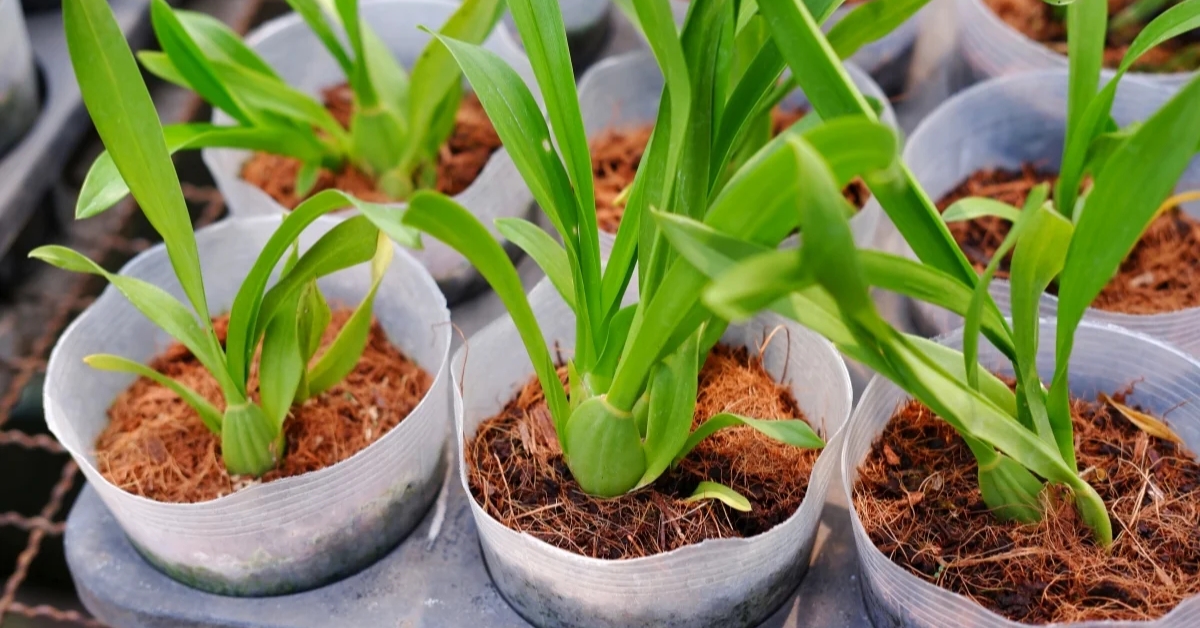
Selecting the appropriate pot is a crucial first step in ensuring your Oncidium's well-being. Unlike many terrestrial plants that prefer spacious containers, Oncidium orchids, being epiphytes in their natural habitat (growing on other plants, typically trees), thrive in smaller, well-aerated pots.
- Embrace the Small: Opt for the smallest pot that can comfortably accommodate the orchid's root system. Overpotting can lead to the potting mix staying too wet for extended periods, inreasing the risk of root rot, a common ailment for orchids.
- Slotted is Superior: The image rightly emphasizes the importance of using slotted pots. These specialized orchid pots feature openings along the sides, which are vital for providing excellent drainage and air circulation to the roots. This mimics their natural environment where roots are exposed to air.
- Repotting Wisdom: While Oncidiums don't need frequent repotting, it's necessary when the orchid outgrows its current container or when the potting medium starts to break down. This typically occurs every one to two years. The best time to repot is usually after the orchid has finished blooming and new growth is emerging. Gently remove the orchid from its old pot, trim any dead or damaged roots with sterile pruning shears, and repot it in fresh media in a slightly larger slotted pot if needed.
The Ideal Foundation: Selecting the Right Growing Media

The growing medium for Oncidium orchids plays a vital role in providing support, retaining some moisture, and ensuring adequate air circulation around the roots. Unlike regular potting soil, which can become waterlogged and suffocate orchid roots, Oncidiums require open and well-draining media.
- Embrace Openness: For Oncidium orchids, it's best to use open media that allow for excellent drainage and aeration. Suitable options include cocochips, charcoal, pumice stone, and lavarock.
- Cocochips Considerations: Cocochips, derived from coconut husks, offer good moisture retention while still providing adequate drainage. Ensure the cocochips are properly treated to remove excess salts that can harm the orchid.
- Charcoal's Charm: Horticultural charcoal is an excellent addition to orchid mixes. It helps to improve drainage, aerate the roots, and even absorb some impurities from the water.
- Pumice Power: Pumice stone is a lightweight volcanic rock that provides excellent drainage and aeration. Its porous nature also allows it to retain some moisture, which can be beneficial for Oncidiums.
- Lavarock Benefits: Lava rock is another porous volcanic material that promotes good drainage and aeration. Its irregular surface can also provide a good grip for the orchid's roots.
- Mix and Match: Many orchid growers prefer to create their own custom mixes by combining these materials to achieve the perfect balance of moisture retention and drainage for their specific growing conditions. For instance, a mix of cocochips and charcoal can provide a good balance of moisture retention and drainage, while adding pumice stone or lavarock can further enhance aeration. Experiment with different ratios to find what works best for your environment and your orchid's needs. Ensure that the mix remains open and doesn't become compacted over time.
The Elixir of Life: Watering Your Oncidium

Proper watering is arguably the most critical aspect of Oncidium orchid care. Overwatering is a common mistake that can lead to root rot, while underwatering can cause the plant to dehydrate and fail to thrive. Finding the right balance is key.
- Watering Frequency: The image suggests watering on alternative days or when the top one inch of the media is dry. This is a good general guideline, but the actual watering frequency will depend on various factors such as the type of potting medium, the size of the pot, the temperature, humidity levels, and the time of year.
- The Finger Test: The best way to determine if your Oncidium needs watering is to insert your finger about an inch into the potting mix. If it feels dry, it's time to water. If it feels moist, wait a day or two and check again.
- Watering Technique: When you water, water thoroughly until water drains freely from the bottom of the pot. This ensures that all the roots receive adequate moisture. Avoid getting water on the leaves or in the crown of the plant, as this can lead to fungal or bacterial infections. If water does accumulate, gently blot it away with a paper towel.
- Water Quality Matters: Ideally, use rainwater, distilled water, or reverse osmosis water for your orchids. Tap water can contain salts and minerals that can build up in the potting mix over time and harm the roots. If you must use tap water, let it sit out for 24 hours to allow chlorine to evaporate.
- Seasonal Adjustments: During the active growing season (typically spring and summer), Oncidiums will need more frequent watering than during the cooler, less active months of fall and winter. Adjust your watering schedule accordingly.
Nourishing Your Blooms: Fertilizing Your Oncidium
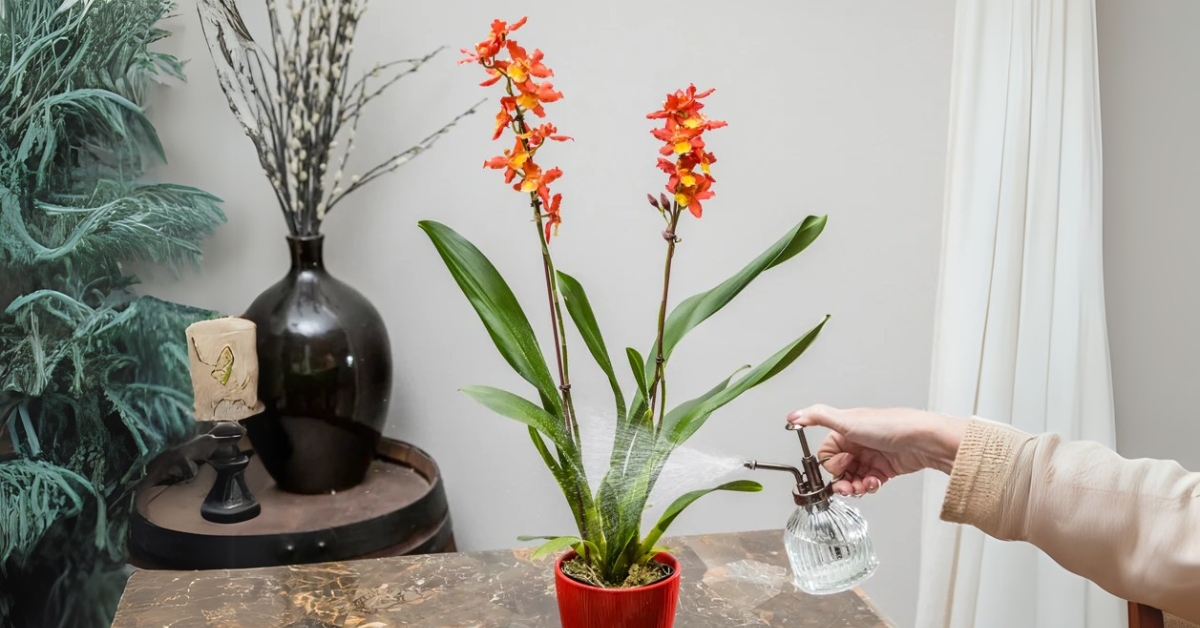
Like all living things, Oncidium orchids benefit from regular fertilization to support healthy growth and abundant blooming. Providing the right nutrients at the right time is essential for their overall well-being.
- Balanced Diet: The image recommends using a water-soluble NPK 19 19 19 fertilizer at half a teaspoon per liter of water weekly. This balanced fertilizer provides the essential macronutrients – nitrogen (N) for leaf and stem growth, phosphorus (P) for root and flower development, and potassium (K) for overall plant health and disease resistance.
- Dilution is Key: Orchids are sensitive to over-fertilization, which can burn their roots. Always dilute your fertilizer to the recommended concentration or even slightly weaker. It's better to fertilize more frequently with a diluted solution than to give a strong dose infrequently.
- Weekly Ritual: The suggestion of weekly fertilization during the growing season is generally a good practice. However, you can adjust the frequency based on your specific growing conditions and the type of fertilizer you are using.
- The "Weakly, Weekly" Approach: Many orchid growers advocate for the "weakly, weekly" approach, which involves using a very dilute fertilizer solution every time you water. This provides a consistent supply of nutrients to the plant.
- Flushing is Important: Every month or so, it's a good idea to flush the potting mix with plain water to remove any accumulated salts from the fertilizer. Water thoroughly several times, allowing the water to drain completely each time.
- Fertilizing During Dormancy: During the orchid's dormant period (typically in the cooler months after blooming), you can reduce or even stop fertilizing altogether until new growth appears.
Illuminating Growth: Providing the Right Light
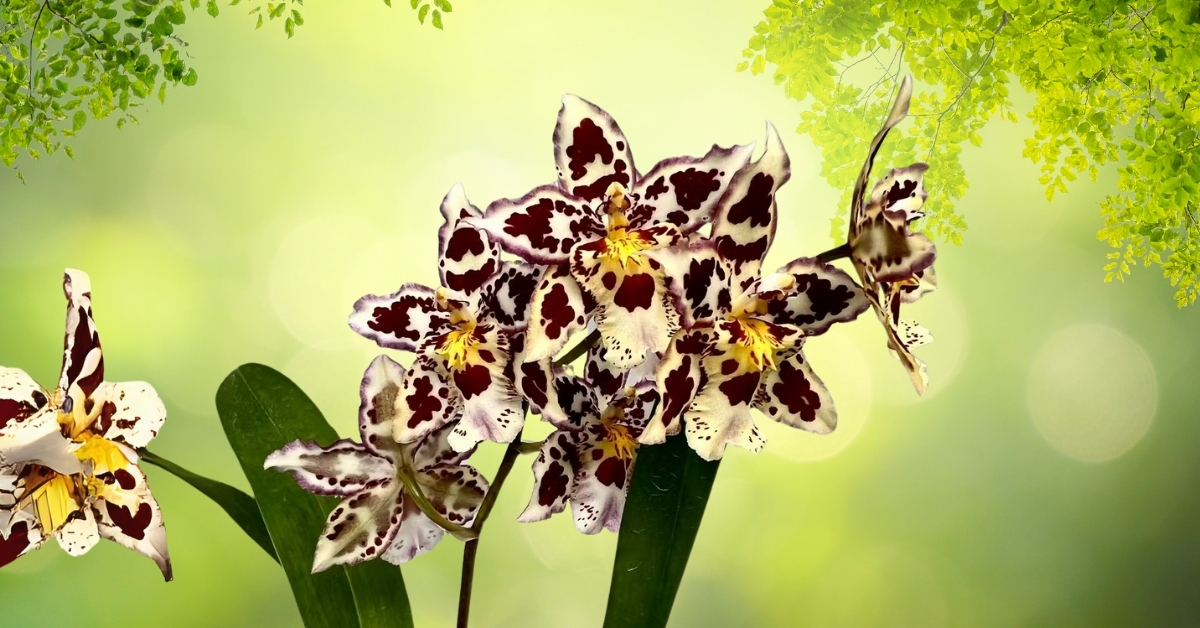
Light is the energy source for photosynthesis, the process by which orchids produce their food. Providing the appropriate amount and intensity of light is crucial for healthy growth and flowering in Oncidium orchids.
- Morning or Late Afternoon Sun: The image suggests giving morning or late afternoon direct sunlight. This is generally the ideal type of light for most Oncidiums. Morning sun is gentler and less likely to scorch the leaves, while late afternoon sun is also less intense than midday sun.
- Avoid Harsh Midday Sun: Direct midday sunlight can be too strong and can easily burn the delicate leaves of Oncidium orchids. If you are growing your orchids near a south-facing window, provide some form of shading, such as a sheer curtain.
- Signs of Too Much Light: If your Oncidium's leaves are turning yellow or developing brown or black scorch marks, it is likely receiving too much light. Move it to a shadier location.
- Signs of Too Little Light: If your Oncidium's leaves are a dark green color and the plant is not blooming, it may not be receiving enough light. Move it to a brighter location.
- Indirect Bright Light: If you don't have a spot that receives direct morning or late afternoon sun, bright indirect light can also be sufficient for Oncidiums. An east-facing window is often ideal.
- Artificial Light: If you are growing your orchids indoors and natural light is limited, you can supplement with artificial grow lights. Fluorescent or LED grow lights are good options.
Embracing Humidity: Creating the Right Atmospheric Conditions

Oncidium orchids, originating from tropical and subtropical regions, thrive in environments with relatively high humidity. Providing adequate humidity is essential for their overall health, especially for proper leaf development and preventing dehydration.
- Daily Misting: The image recommends daily misting the plant with water one to two times. This can help to increase the humidity around the orchid, especially in dry indoor environments. Use room temperature water for misting.
- Humidity Trays: Placing your Oncidium's pot on a humidity tray filled with pebbles and water is another effective way to increase humidity. As the water evaporates, it creates a humid microclimate around the plant. Ensure the bottom of the pot is not sitting directly in the water, as this can lead to root rot.
- Grouping Plants: Grouping your orchids together can also help to increase humidity, as plants naturally release moisture through transpiration.
- Humidifiers: In very dry environments, you may consider using a humidifier to maintain optimal humidity levels for your orchids. Aim for a humidity range of 40% to 70%.
- Good Air Circulation: While humidity is important, good air circulation is equally crucial to prevent fungal diseases. Ensure there is adequate airflow around your Oncidium, especially when humidity levels are high. Avoid placing your orchid in a stagnant corner.
The Dance of Blooms: Encouraging Flowering

Getting your Oncidium orchid to bloom is the ultimate reward for your care and attention. While following the guidelines above will contribute to healthy growth and eventual flowering, here are a few additional tips to encourage those beautiful blooms:
- Temperature Fluctuations: A slight drop in nighttime temperatures can sometimes trigger blooming in Oncidiums. This mimics the natural temperature changes they experience in their native habitats.
- Mature Plants Bloom Best: Ensure your Oncidium is mature enough to bloom. Young plants may take a few years to reach flowering size.
- Don't Disturb During Spike Development: Once you see a flower spike emerging, avoid moving the plant unnecessarily, as this can sometimes cause the spike to abort.
- Patience is Key: Sometimes, even with the best care, an Oncidium may take its time to bloom. Be patient and continue to provide optimal conditions, and eventually, you will be rewarded with its stunning floral display.
Common Issues and Solutions
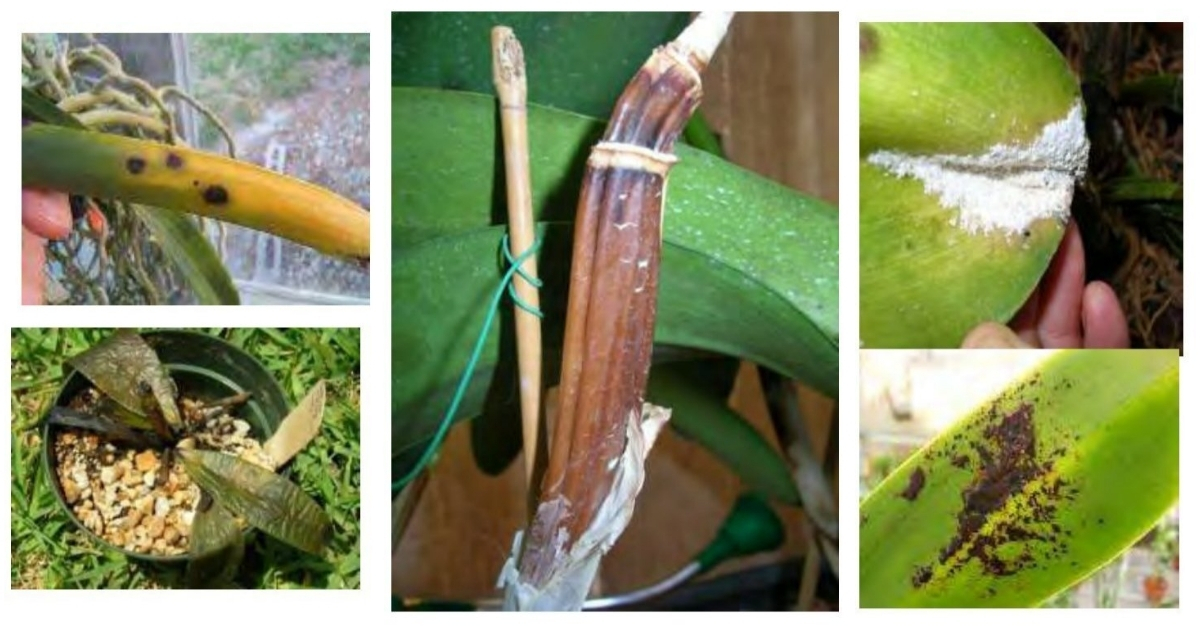
While Oncidium orchids are generally resilient, they can occasionally encounter some common issues. Being aware of these potential problems and knowing how to address them can help you keep your orchid healthy and thriving.
- Root Rot: This is often caused by overwatering and poor drainage. Symptoms include mushy, brown or black roots. To address root rot, repot the orchid in fresh, well-draining media after trimming away any affected roots with sterile shears. Adjust your watering habits.
- Leaf Spot: Fungal or bacterial infections can cause spots to appear on the leaves. Improve air circulation and avoid getting water on the leaves. You may need to use a fungicide or bactericide in severe cases.
- Pests: Common orchid pests include scale, mealybugs, and spider mites. Inspect your orchid regularly for any signs of infestation. You can often remove pests manually with a cotton swab dipped in rubbing alcohol or use an insecticidal soap.
- Lack of Blooming: Several factors can contribute to a lack of blooming, including insufficient light, improper watering, inadequate fertilization, or the plant not being mature enough. Review your care practices and make adjustments as needed.
Conclusion: Embracing the Joy of Oncidium Orchids
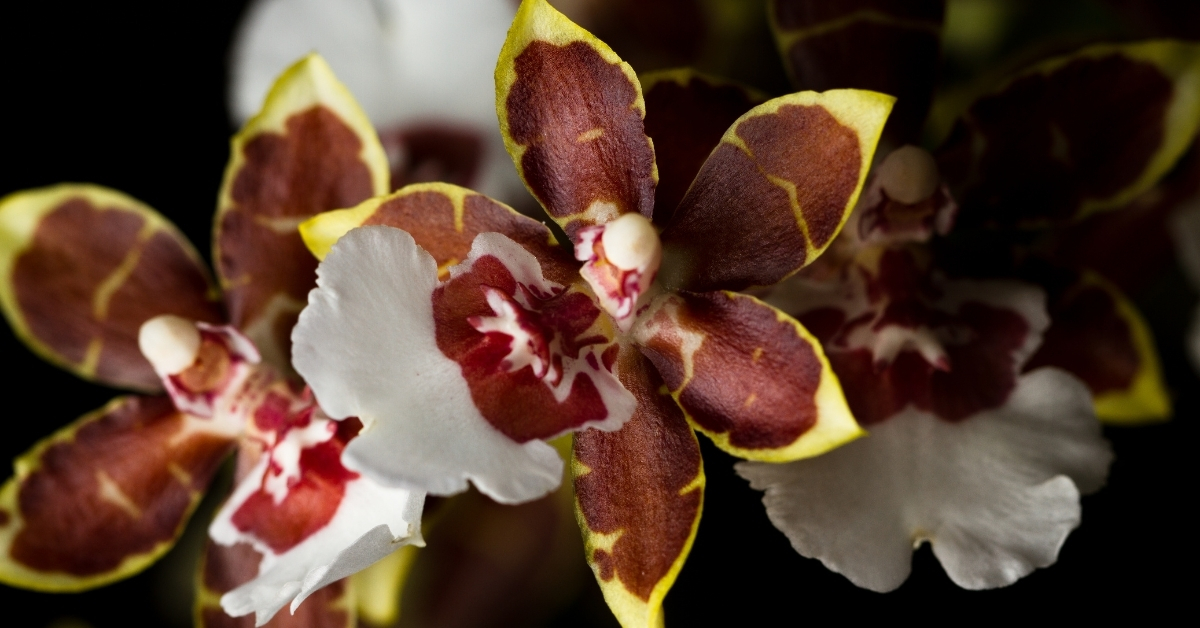
Caring for Oncidium orchids can be a deeply rewarding experience. Their exquisite flowers, with their intricate details and vibrant colors, bring a touch of natural artistry into your home. By understanding their specific needs for potting, media, watering, fertilization, light, and humidity, you can create an environment where your Oncidium orchid will flourish and grace you with its captivating "dancing lady" blooms for years to come. Embrace the journey of learning about these fascinating plants, and you'll discover the joy of nurturing their delicate beauty.


